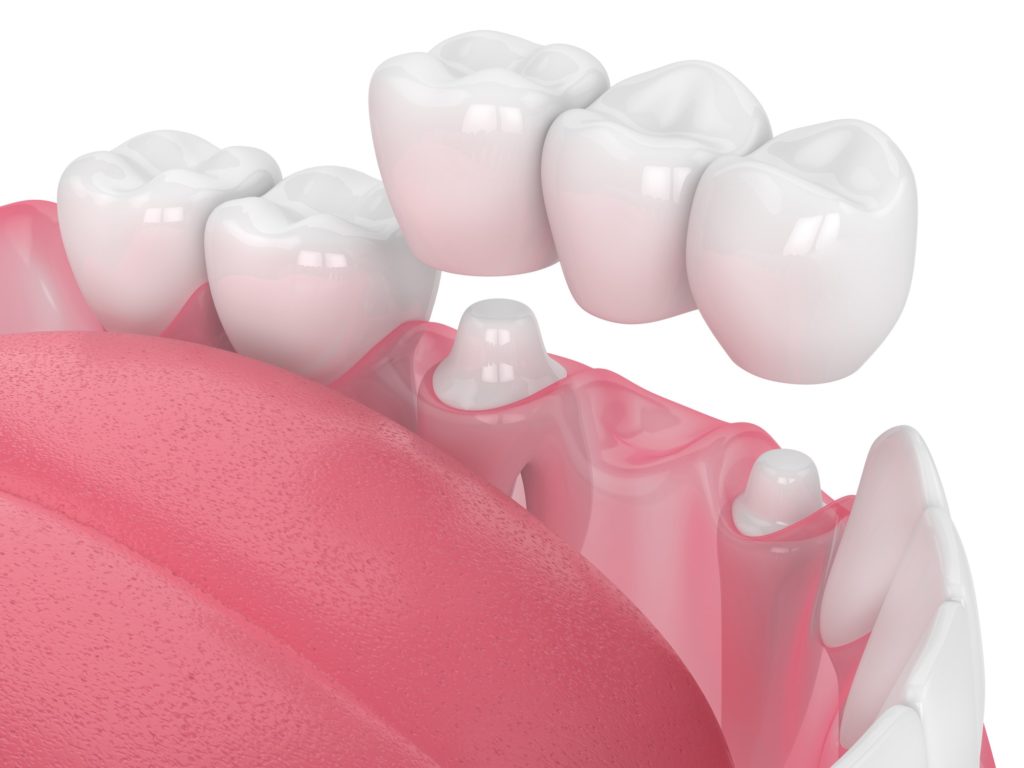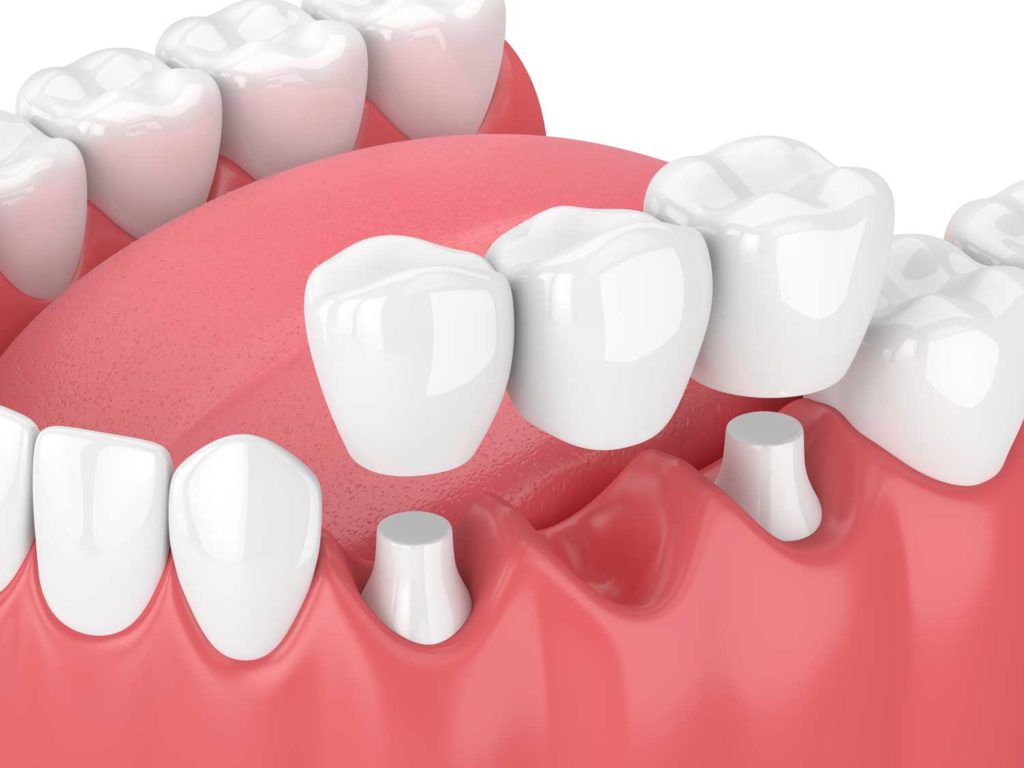Overview
A bridge (or partial denture) is a custom-made replacement for one or more missing teeth that literally “bridges the gap.” Artificial teeth are attached to gum-colored plastic bases. The bases are attached to a framework supported by abutments.
There are two types of bridges: removable and fixed. Both can be constructed from gold alloys, non-precious alloys, porcelain, or a combination of materials. Porcelain bridges are often bonded to precious or non-precious metal.
With proper care, the life of a bridge is 10-20 years. Typically, two office visits are required to prepare, complete, and fit a permanent bridge.

Warning Signs
Visit your Dentist if you have one or more missing teeth and experience any of these symptoms:
- A noticeable difference in your ability to speak or chew
- A change in the shape of your face or the self-confidence of your smile
Left untreated, missing teeth will:
- Produce an unstable bite and dental stress that can damage teeth and gums or cause headaches
- Increase your risk for periodontal disease and tooth decay
When Prescribed
A bridge is often prescribed:
- When one or more teeth are missing and there are healthy teeth on both sides of the gap
- As part of a dental restoration plan after the removal of damaged, decayed, or broken teeth
Bridge Types
Whether removable or fixed, a bridge is anchored in place by abutments.
Removable Bridge
A removable bridge is detached by its wearer for daily cleaning and at bedtime. It is prescribed when:
- Teeth adjacent to the gap are weak
- There are multiple missing teeth
- There are no posterior teeth to provide an anchor for the bridge
Fixed Bridge
A fixed bridge provides greater stability than a removable bridge because it is permanently anchored to abutments by use of bonding or a crown. Only a Dentist or Specialist can remove it.
Fixed bridges must be cleaned daily using dental floss and a specially made aid.

Patient Experience
After a thorough exam of your teeth, gums and supporting bone structure, your Dentist will discuss treatment options and answer your questions. If the agreed-upon treatment is a dental bridge, here’s what to expect:
- A local anesthetic is applied so your Dentist can prepare the abutments. If an abutment tooth is decayed or broken, your Dentist may first need to rebuild and protect it with a crown.
- A putty-like material is used to make an impression of your prepared teeth. Your bridge will be fabricated for a precise fit based on this impression.
- To protect your teeth and gums until your permanent bridge is ready, your Dentist will fit you with a temporary bridge.
- During a second office visit, your Dentist will fit and attach your permanent bridge.
